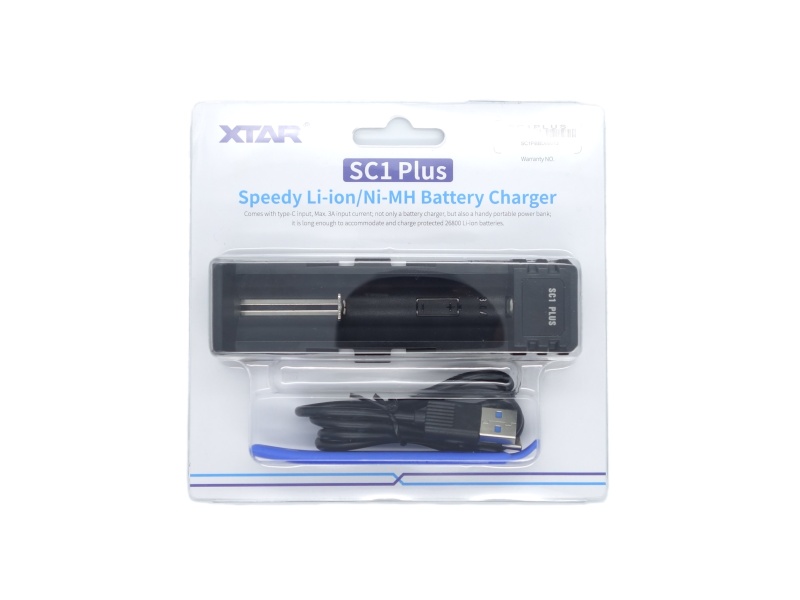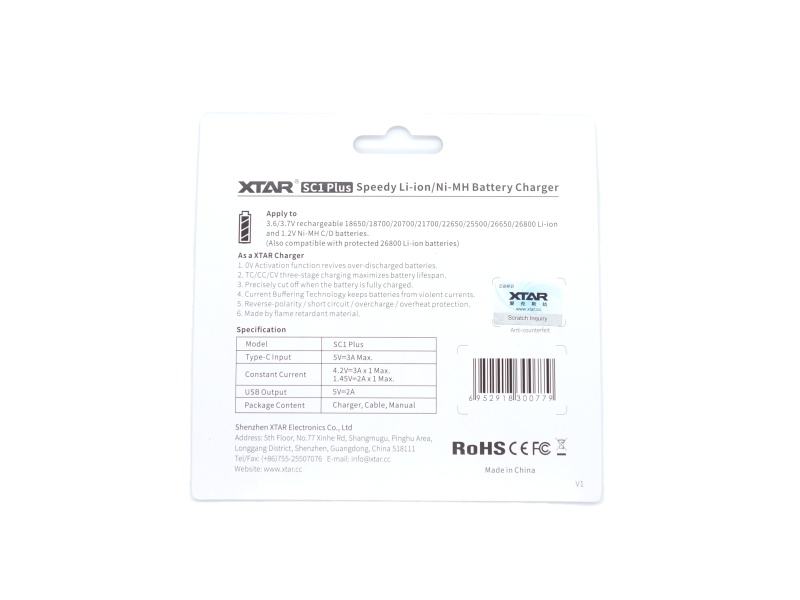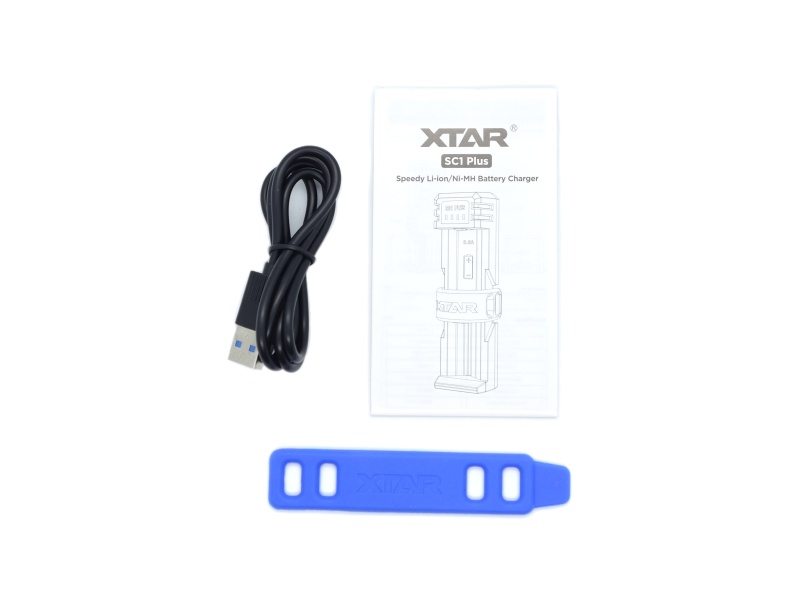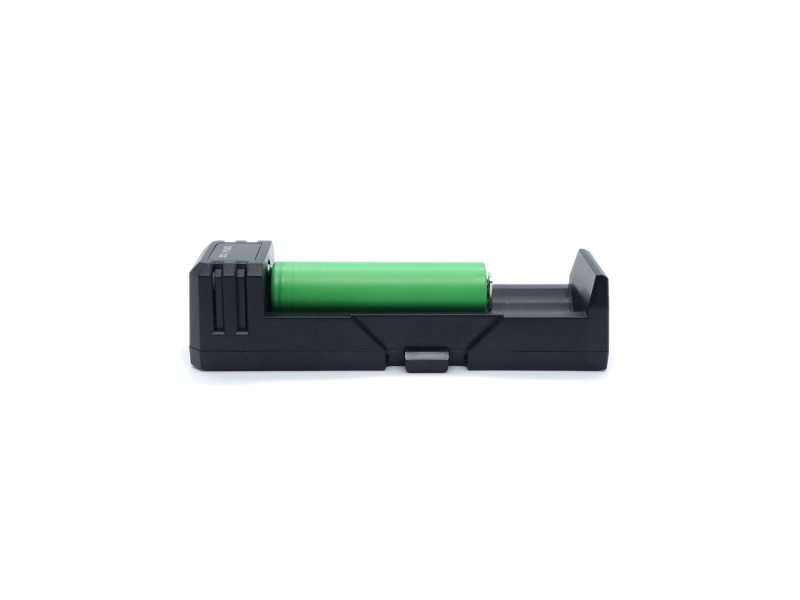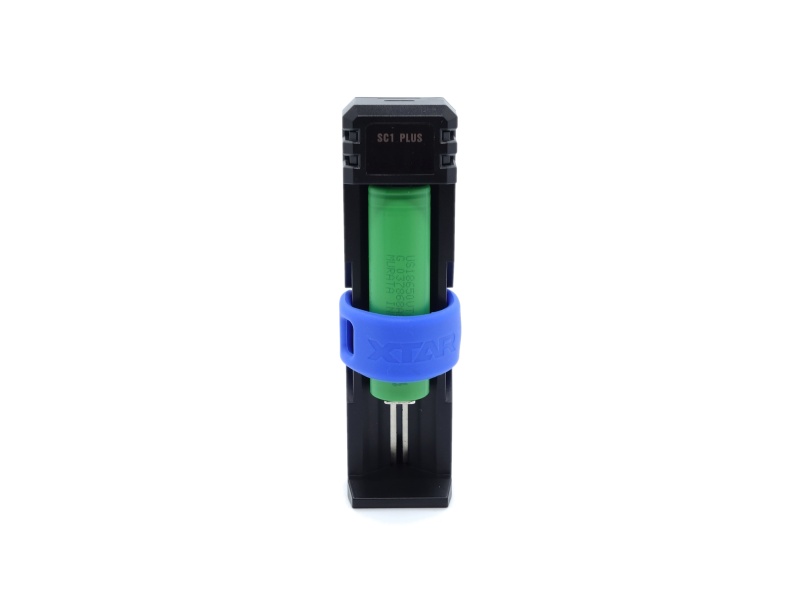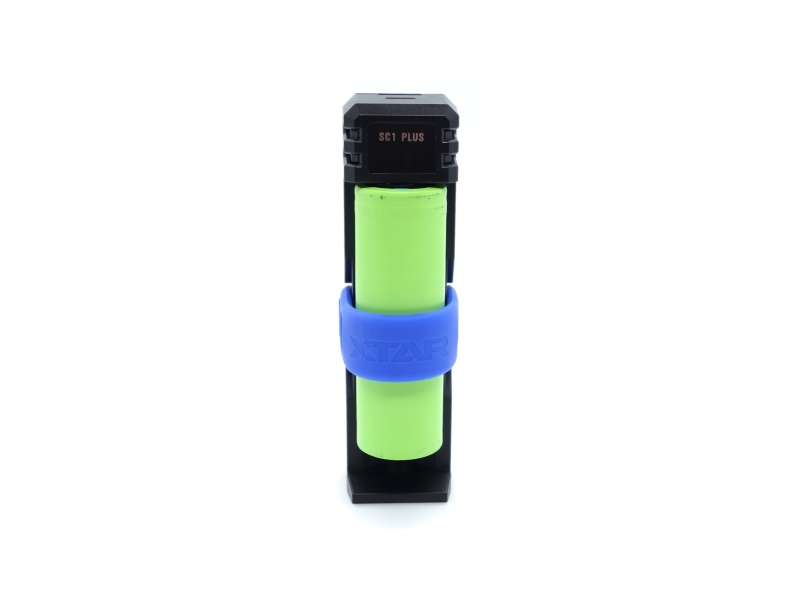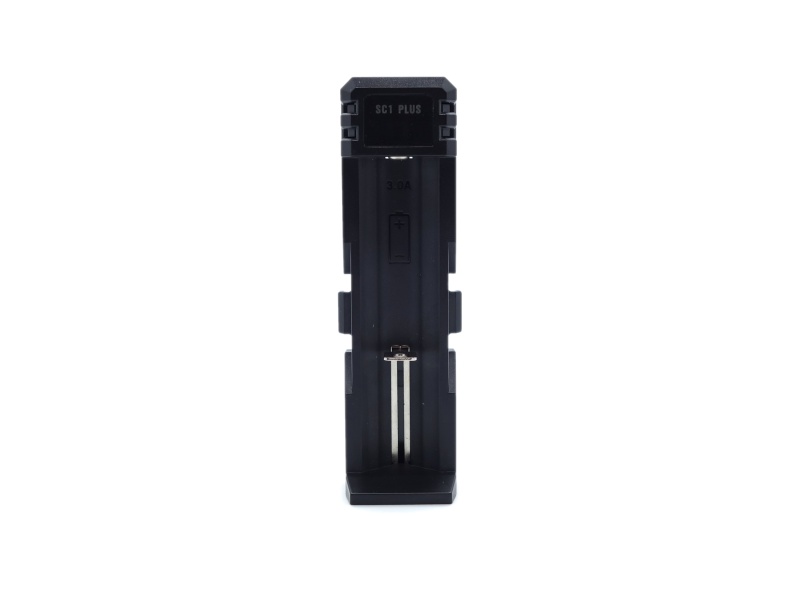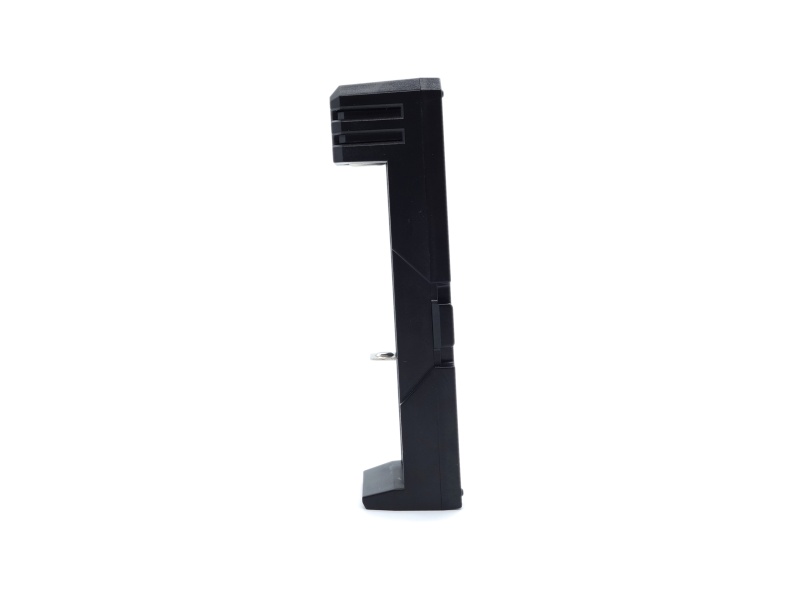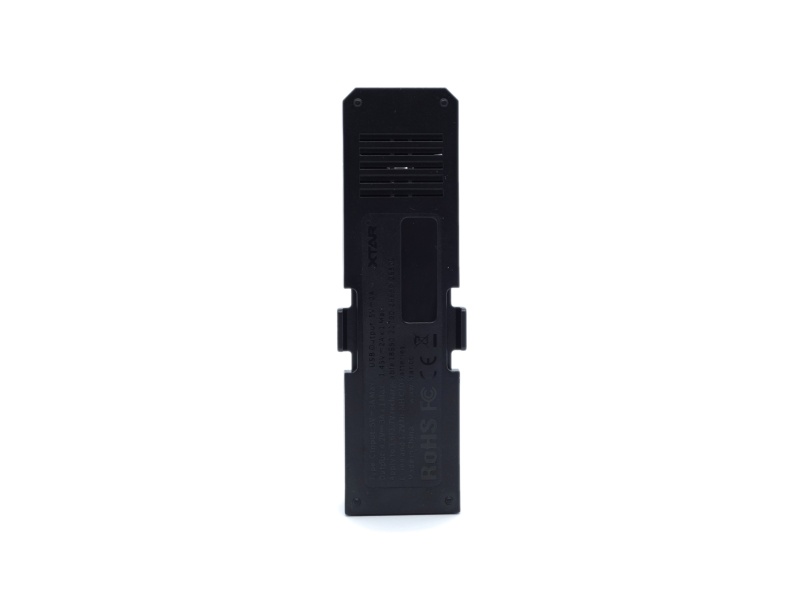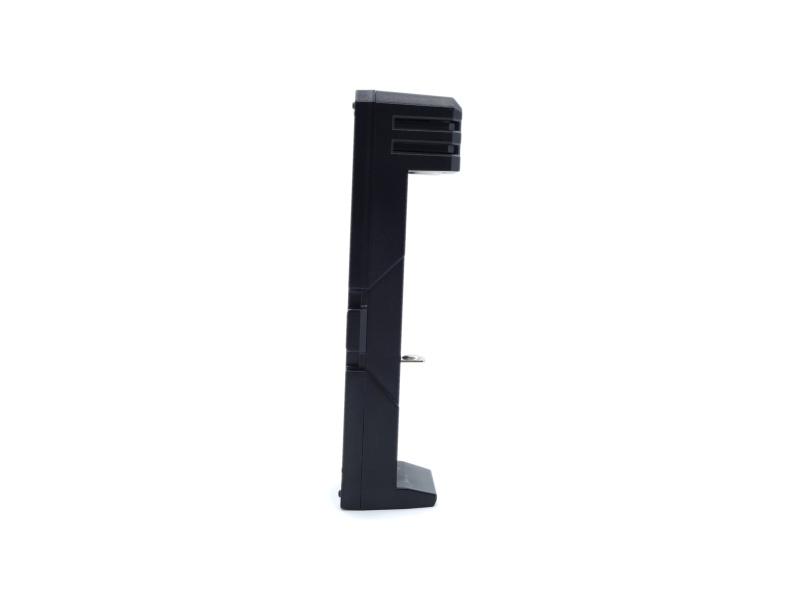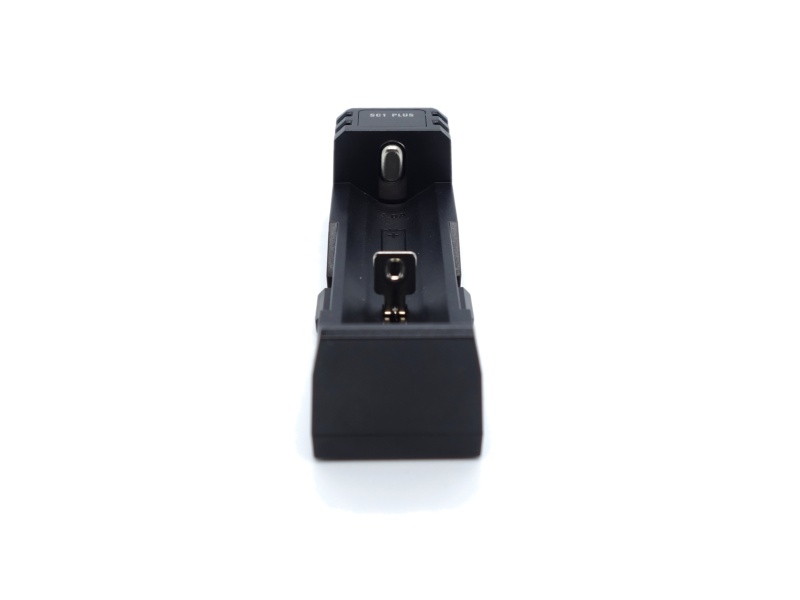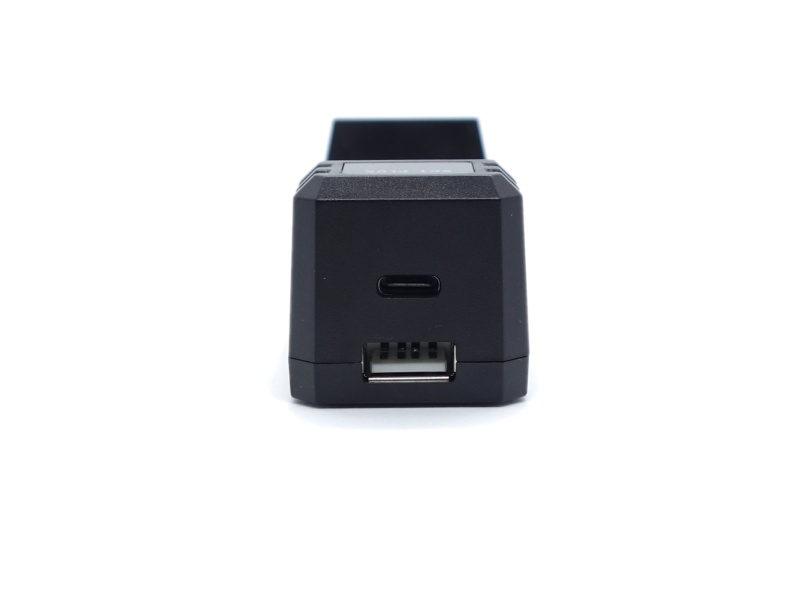XTAR SC1 Plus Charger Review
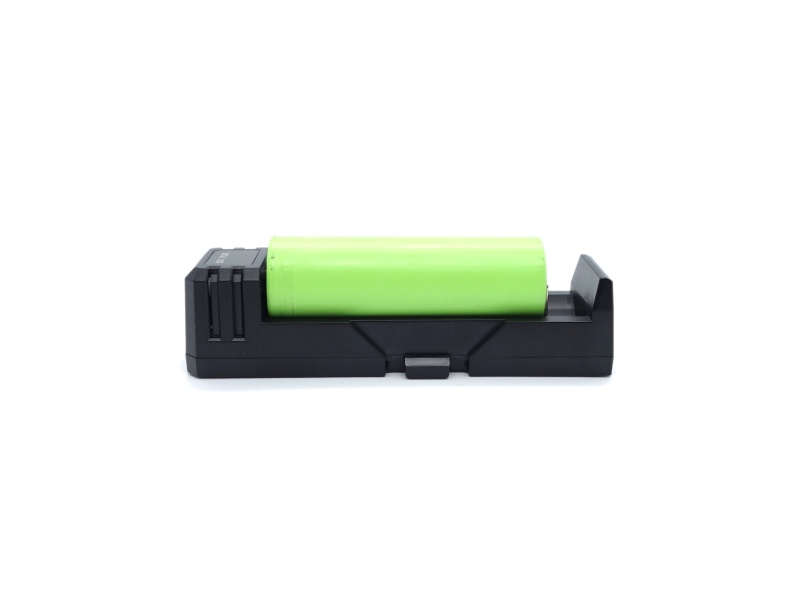
XTAR SC1 Plus Charger#
- Specifications
- Introduction
- Charger in use
- Build quality
- Size and comparison
- User interface
- Batteries, charging and powerbank
- Conclusion
- Product page
Specifications#
| Brand/model | XTAR SC1 Plus |
|---|---|
| Slots | 1 |
| Input | USB-C 5V⎓3A |
| Constant Current | 4.2V⎓3Ax11.45V⎓2Ax1 |
| Cut-Off Voltage | 4.2±0.05V / 1.45±0.01V |
| Cut-Off Current | ⩽150mA |
| Operating Temperature | 0-40℃ |
| Powerbank | USB-A 5V 2A |
| Review date | May 2022 |
Introduction#
Shenzhen XTAR Electronics Co., Ltd. have been around since 2006. XTAR produce chargers, powerbanks, batteries, torches and solar panels.
When manufacturers like Emisar and Convoy started producing 26800 torches, torch enthusiasts started searching for 26800 chargers and some came up with DIY solutions (e.g. 3D print an adapter or solder wires on with magnets).
XTAR actively participates in the torch enthusiast community across multiple forums, and social media channels, and they noticed a demand for a charger capable of handling a 26800 cell.
XTAR held a contest and asked the community to name the new charger. I proposed the name “SC1 Plus” and XTAR selected that name. They kindly sent an XTAR SC1 Plus and XTAR USB-C PD 45W power supply with an AU adapter for free.
Packaging#
The XTAR SC1 Plus came in a small blister pack with a cardboard back that slides out.
The following was included:
- XTAR SC1 Plus
- Silicone strap
- USB-A to USB-C cable
- User manual
- XTAR USB-C PD 45W Power Adapter (optional)
Charger in use#
The SC1 Plus is simple to use. Connect a power supply to the USB-C port to use the SC1 Plus as a charger and insert a cell, or connect a device to the USB-A port and use the SC1 Plus as a powerbank. Both the charger and powerbank features can be used as the same time (pass through).
Vents near the head of the SC1 Plus help with cooling but I would not want the SC1 Plus to be in my pocket while stress testing it with a 5V 2A load because the boost converter will get uncomfortably hot. It did not get hot while charging a phone at 5V 1.5A. Most of the heat is near the “SC1 Plus” label.
Build quality#
The design looks simple and the plastic feels nice.
I like how XTAR have added two hooks to the sides of the SC1 Plus so that a cell can be held securely in place with a silicone strap while using the powerbank feature. The included silicone strap has notches to make it easy to strap a cell in.
The spring action is smooth and the tension is just right. USB-C and USB-A ports are lined up properly.
The XTAR USB-C PD 45W Power Adapter that was kindly provided came with an adapter for Australia with insulated pins. The adapter clips in securely over the US pins.
Dimensions and size comparison#
Dimensions#
I took the following measurements using digital callipers.
| Measurement | Unit (mm) |
|---|---|
| Charger height | 32.4 |
| Charger width | 34.6 |
| Charger length | 125.4 |
| Shortest cell length | 57.3 |
| Longest cell length | 91.7 |
Size comparison with its competition#
The XTAR SC1 Plus is definitely one of my larger single slot chargers. This is to be expected when it supports a protected 26800 cell.
From left to right: XTAR ANT MC1 Plus, Nitecore F1, XTAR SC1 Plus, XTAR PB2S.
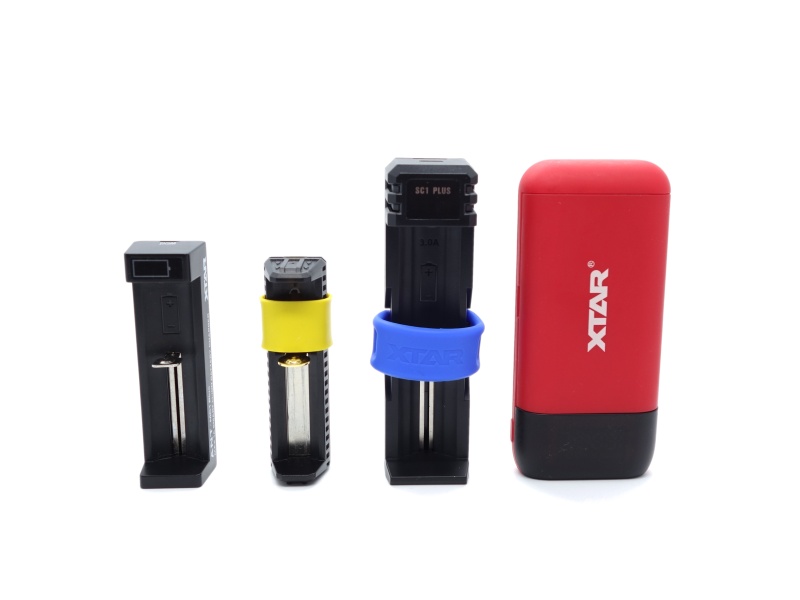
User interface#
The user interface is simple. Insert a cell and either charge it or use the XTAR SC1 Plus as a powerbank.
Battery status#
There are four blue LEDs. They are used to show the cell capacity when the XTAR SC1 Plus is either being used as a charger or as a powerbank.
| LEDs | Battery level |
|---|---|
| 4 LEDs flashing | Polarity reversed |
| 4 LEDs on | Power is 100% |
| 3 LEDs on and 4th flashing | 75% ≤ Power < 100% |
| 2 LEDs on and 3rd flashing | 50% ≤ Power < 75% |
| 1 LED on and 2nd flashing | 25% ≤ Power < 50% |
| 1 LED flashing | 0% ≤ Power < 25% |
Low voltage protection#
I observed low voltage protection kicking in when a cell drops below 3.21V while using the XTAR SC1 Plus as a powerbank.
Batteries, charging and powerbank#
Batteries#
The following cells are supported:
| Cell Type | Sizes |
|---|---|
| 3.6V/3.7V Li-ion | 18650 / 18700 / 20700 / 21700 / 22650 / 25500 / 26650 / 26800 |
| 1.2V Ni-MH | C / D batteries. |
Protected 26800 cells also fit.
Charging#
Power supply: XTAR USB-C PD 45W Power Adapter
USB Meter: Ruideng TC66C
Charging profile graphs were created using a Ruideng TC66C USB Meter.
Charging an 18650#
Cell: Sony VTC6 18650
Room temperature: 17.7 C
Initial voltage: 2.88 V
Final voltage: 4.147 V
Duration: 1 hour 16 minutes
The charger quickly increased from around 0.2A to 2.4A, peaked at 2.78A at 41 minutes, and gradually reduced to 0.5A in the last half of the charging cycle before stopping.
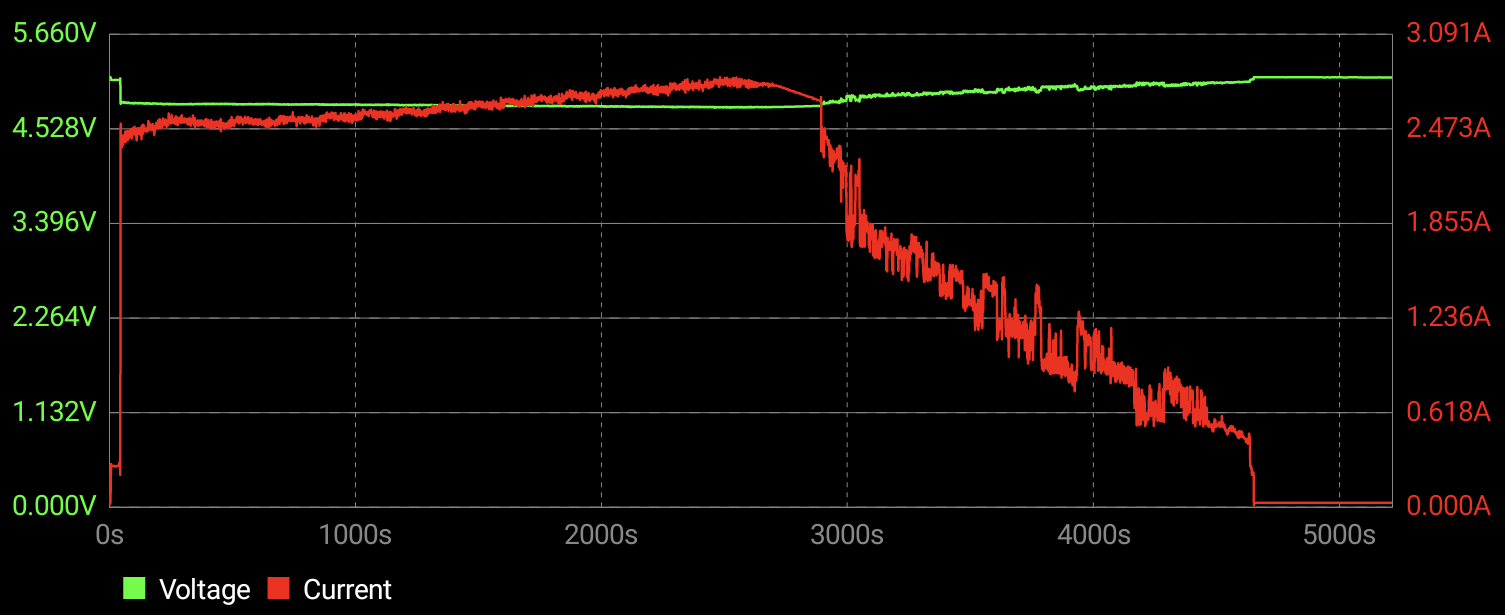
Charging a 21700#
Cell: Samsung 40T 21700
Room temperature: 18.2 C
Initial voltage: 2.82 V
Final voltage: 4.154 V
Duration: 1 hour 15 minutes
The charger quickly increased from around 0.2A to 2.4A, peaked at 2.78A at 49 minutes, and gradually reduced to 0.5A in the last third of the charging cycle before stopping.
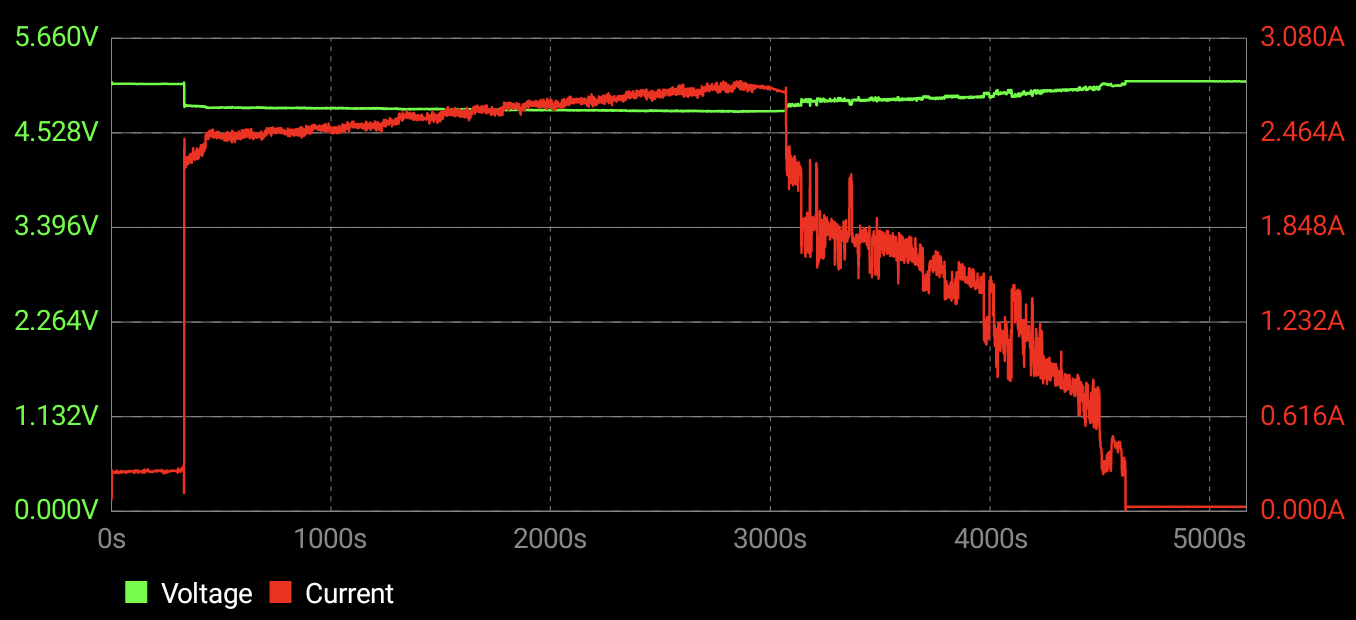
Charging a 26800#
Cell: 26800 included with a Convoy L8
Room temperature: 16.9 C
Initial voltage: 2.88 V
Final voltage: 4.153 V
Duration: 2 hours 40 minutes
The charger quickly increased from around 0.2A to 2.4A, peaked at 2.78A at 1 hour 56 minutes minutes, and gradually reduced to 0.5A in the last quarter of the charging cycle before stopping.
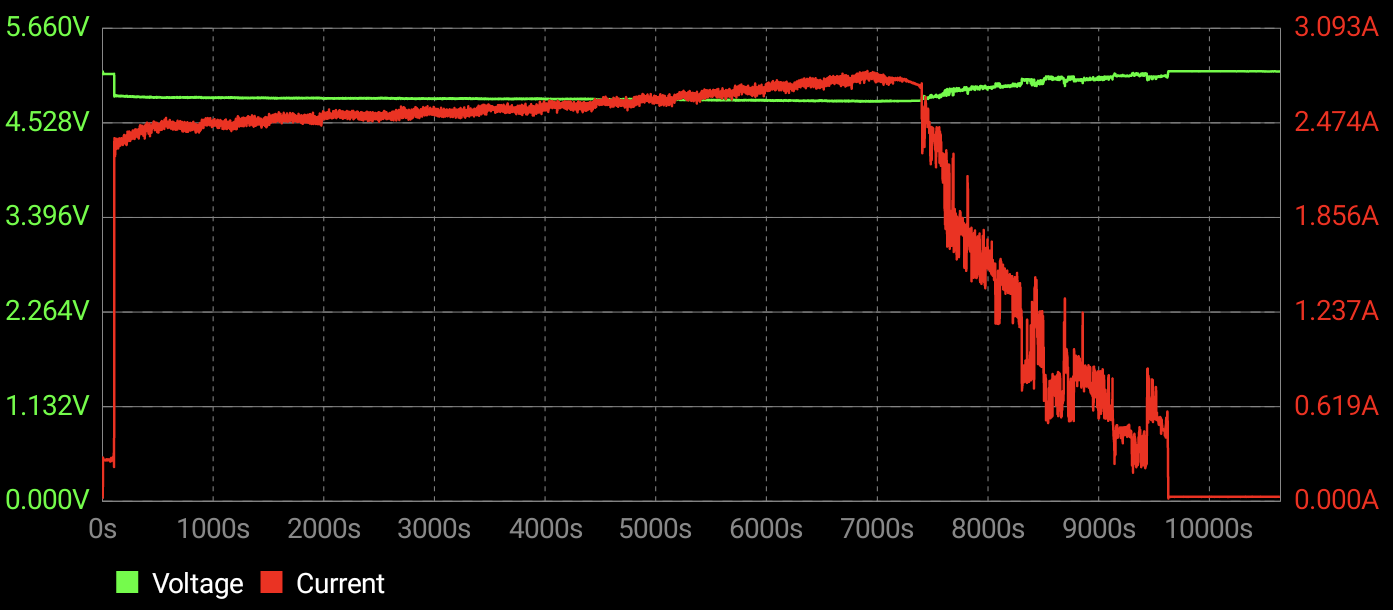
Powerbank#
USB Meter: Ruideng UM25C
Phone: Google Pixel
Cell: Sony Murata VTC6 18650
Room temperature: 15.7 C
Initial voltage: 4.20 V
Final voltage: 3.21 V
Temperature peaked at 28 C.
The powerbank provided 5V 1.5A initially, dropped to 5V 1.3A after 5 minutes, dropped to 5V 1.15A after 30 minutes, dropped to 5V 1A after 49 minutes, dropped to 5V 0.8A after 57 minutes, dropped to 5V 0.7A after 1 hour 11 minutes, dropped to 5V 0.6A after 1 hour 21 minutes, and stopped at 1 hour 45 minutes.
The phone went from 4% to 67% (1706mAh) over 1 hour 45 minutes.
Using a 5V 2A load with a 21700#
Load: Ruideng HD35
Cell: Samsung 40T 21700
Room temperature: 16.9 C
Initial voltage: 4.20 V
I configured the Ruideng HD35 to use 5V 2A.
Temperature peaked at 39 C. Test stopped to avoid damaging the boost converter.
Power supply compatibility#
I checked compatibility with the following power supplies:
| Power supply | USB Type | Protocol | Does it charge? |
|---|---|---|---|
| Apple 61W Power Adapter | USB-C | PD | Yes |
| Google Pixel Power Adapter | USB-C | PD | Yes |
| Generic 5V 2.4A Power Adapter | USB-A | Yes | |
| XTAR USB-C PD 45W Power Adapter | USB-C | PD | Yes |
Conclusion#
The XTAR SC1 Plus is a great alternative to charging a 26800 cell in a torch. And it is being sold at a decent price.
My sample stopped charging at 4.15V each time. This is on the lower end of the cut-off voltage 4.2±0.05V. It is better than stopping at 4.25V but I would prefer it to stop at 4.19V.
It would be nice if the USB-C port could be used to provide USB-C PD3 or QC3 output like the XTAR PB2S. The powerbank works fine for topping up a phone and the silicone strap is a nice touch.
Thank you XTAR for making this charger for the torch community!
Pros:#
- Fits large protected 26800 cells
- 3A fast charging
- Pass through charging
- Powerbank
- Useful silicone strap
Cons:#
- No manual current selection
- No USB-C output
